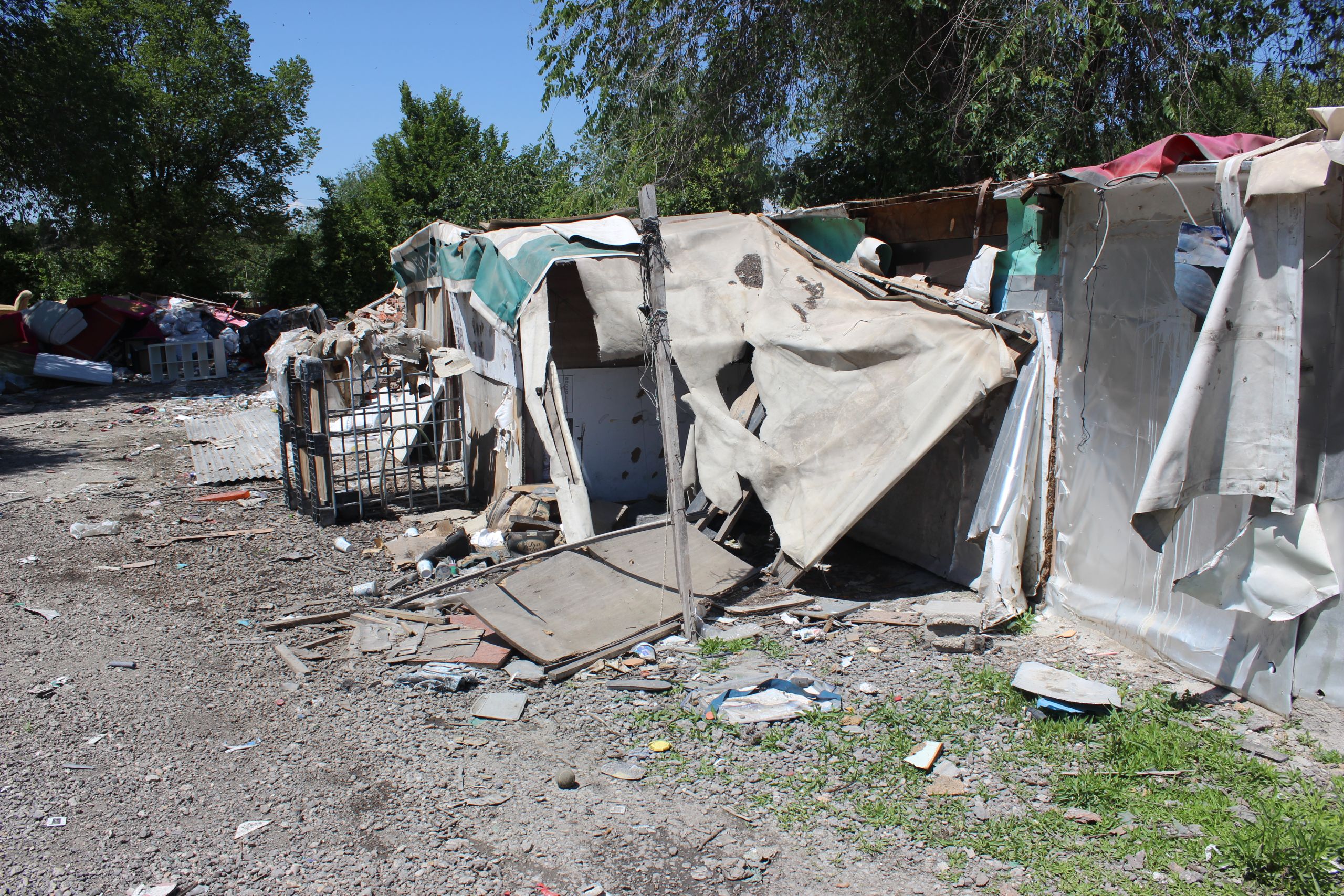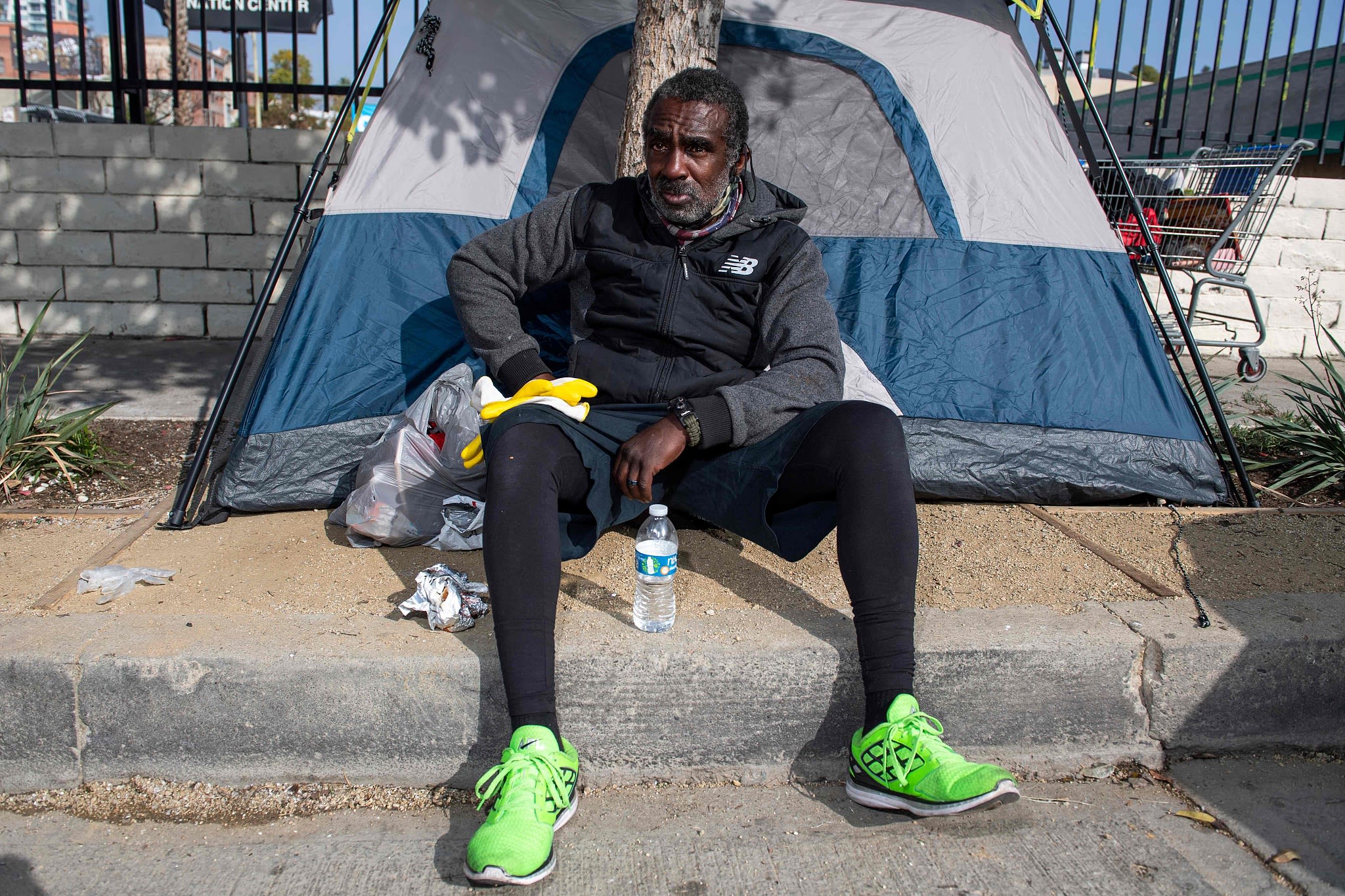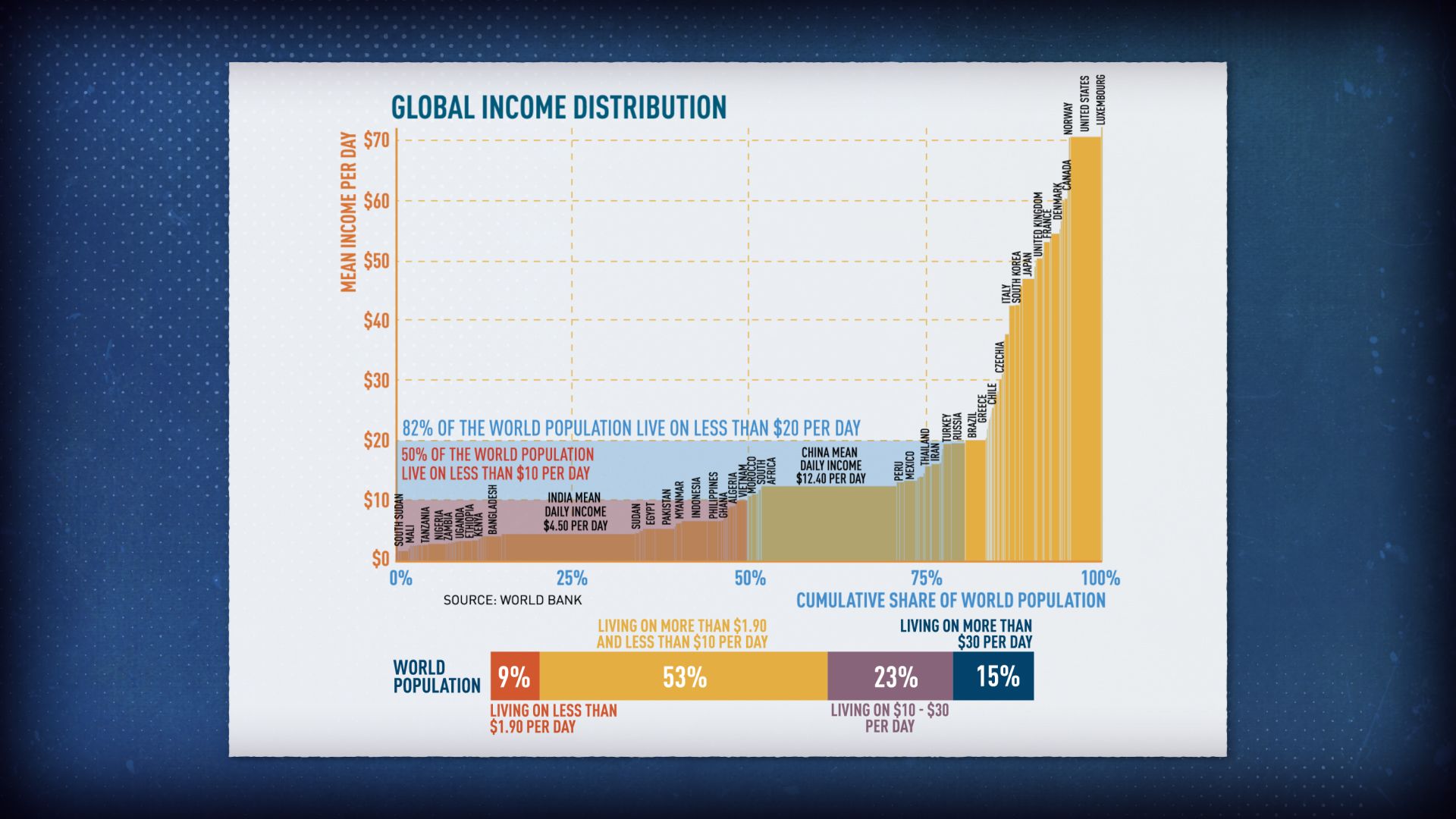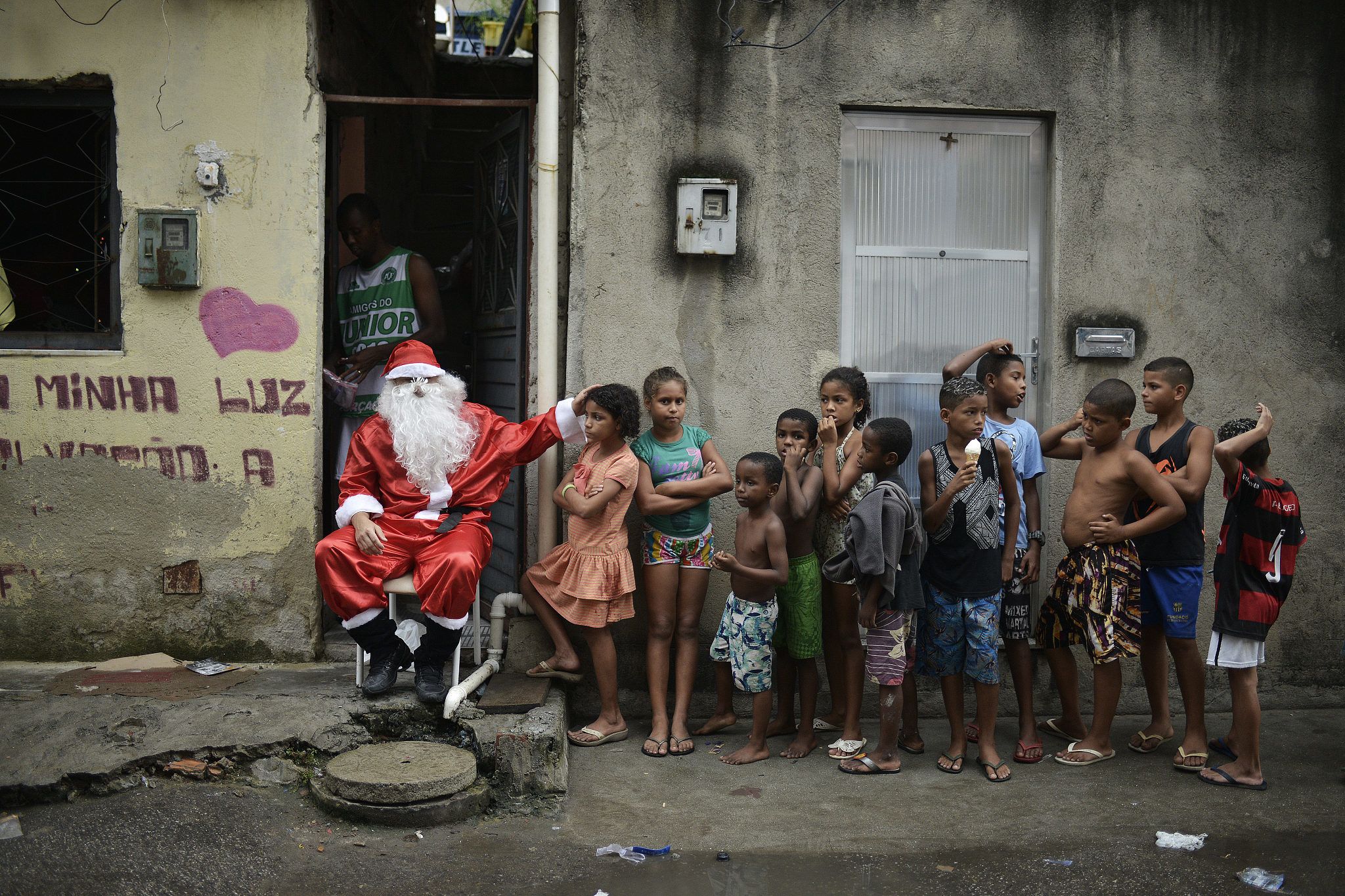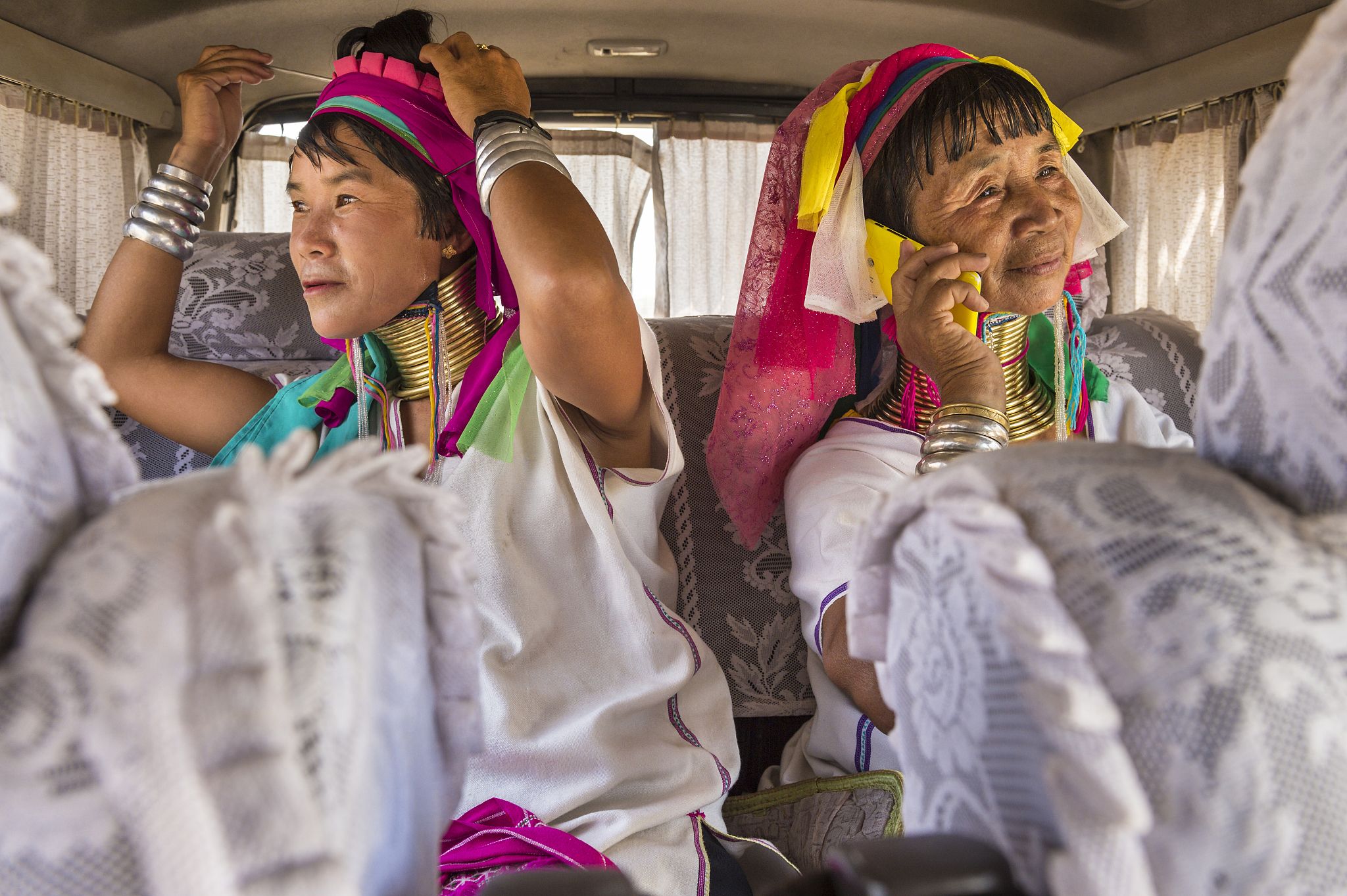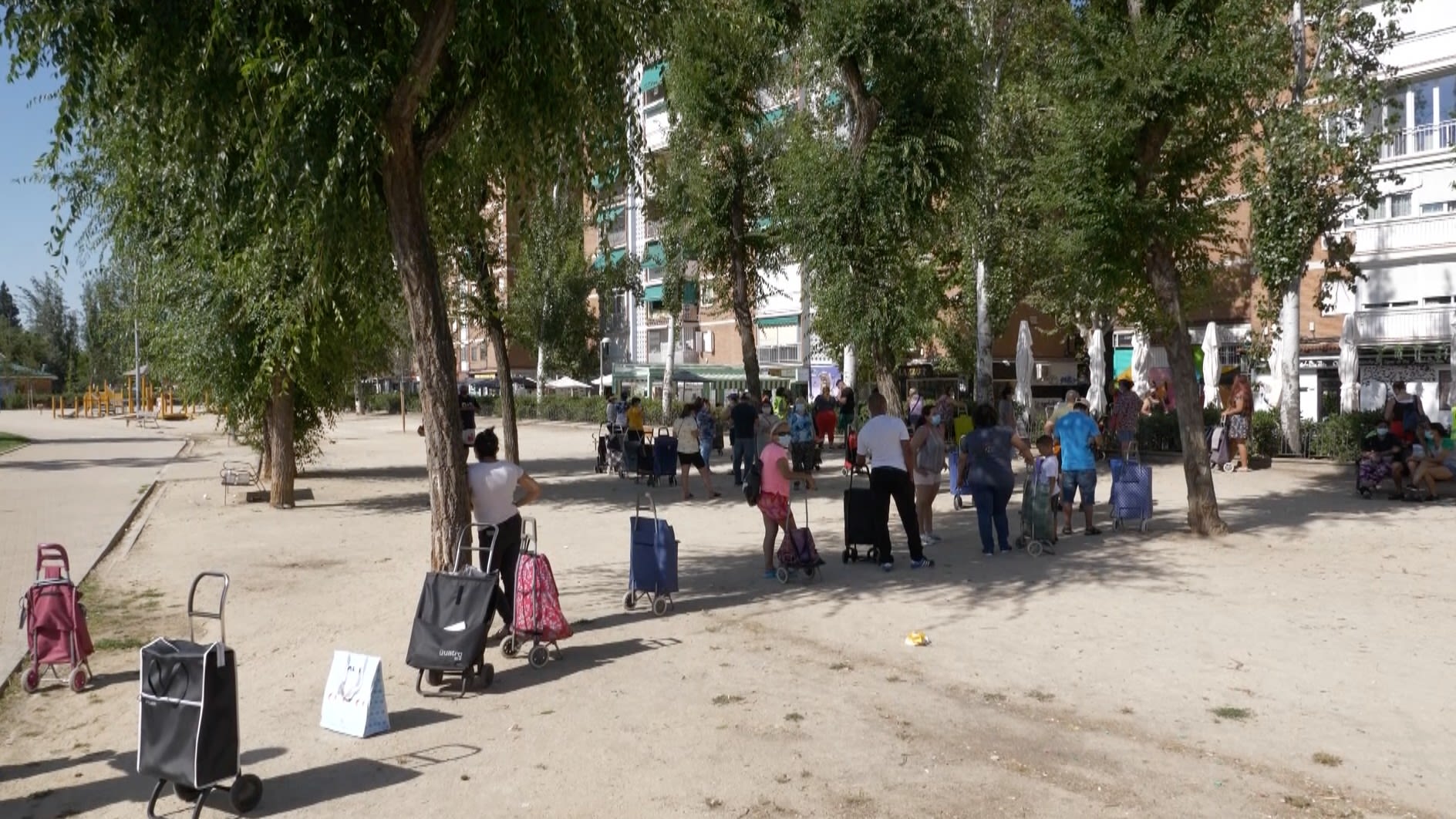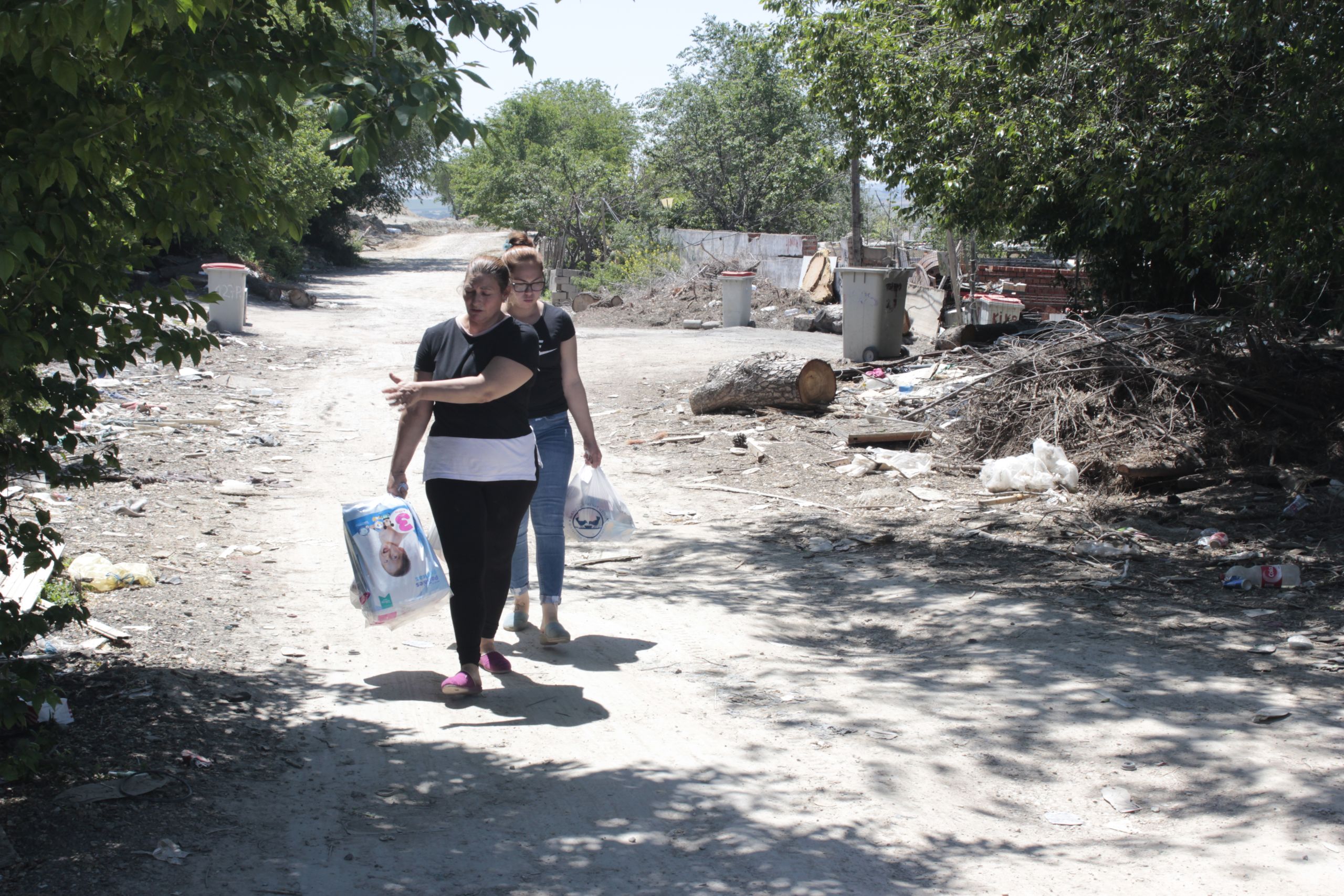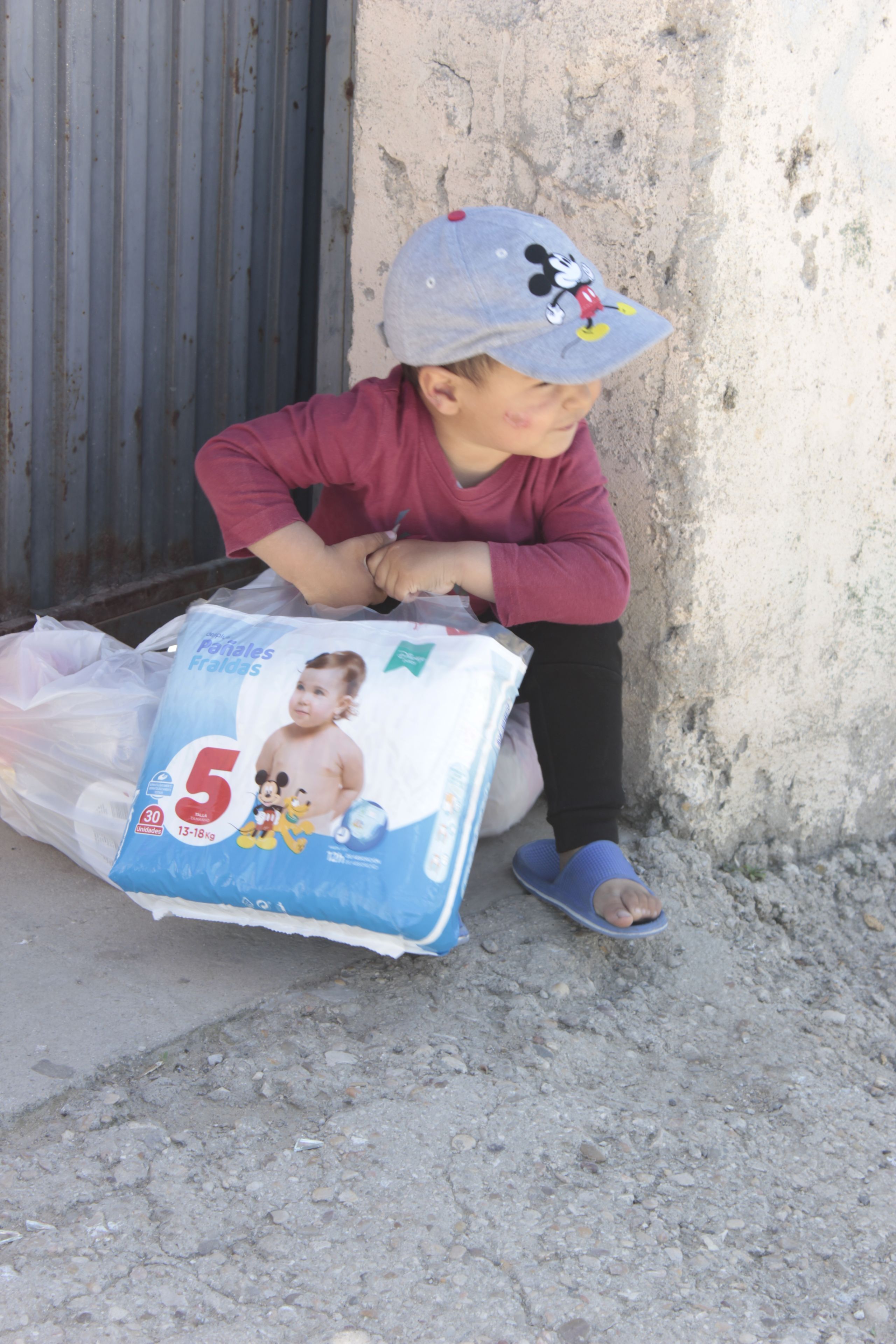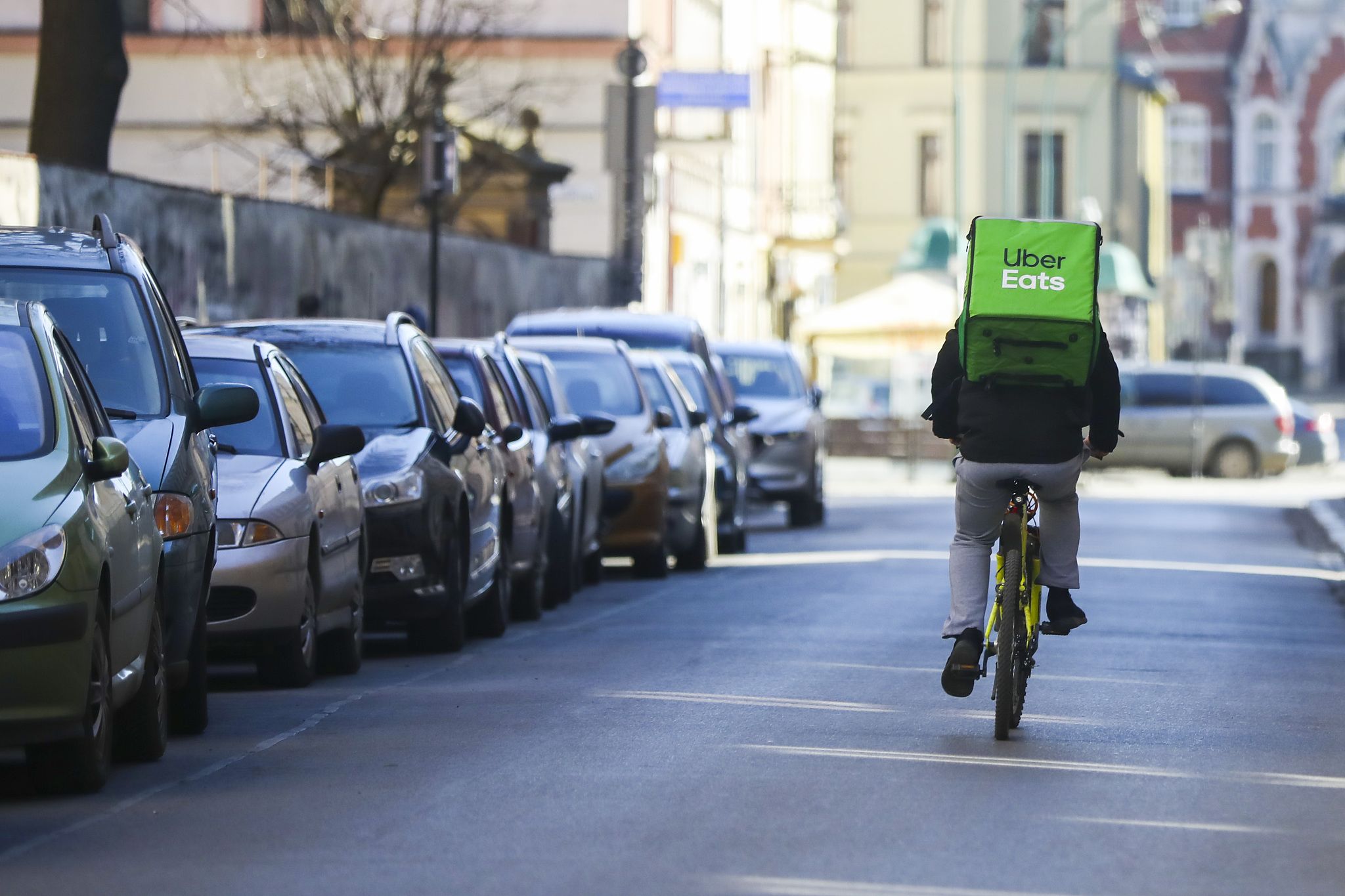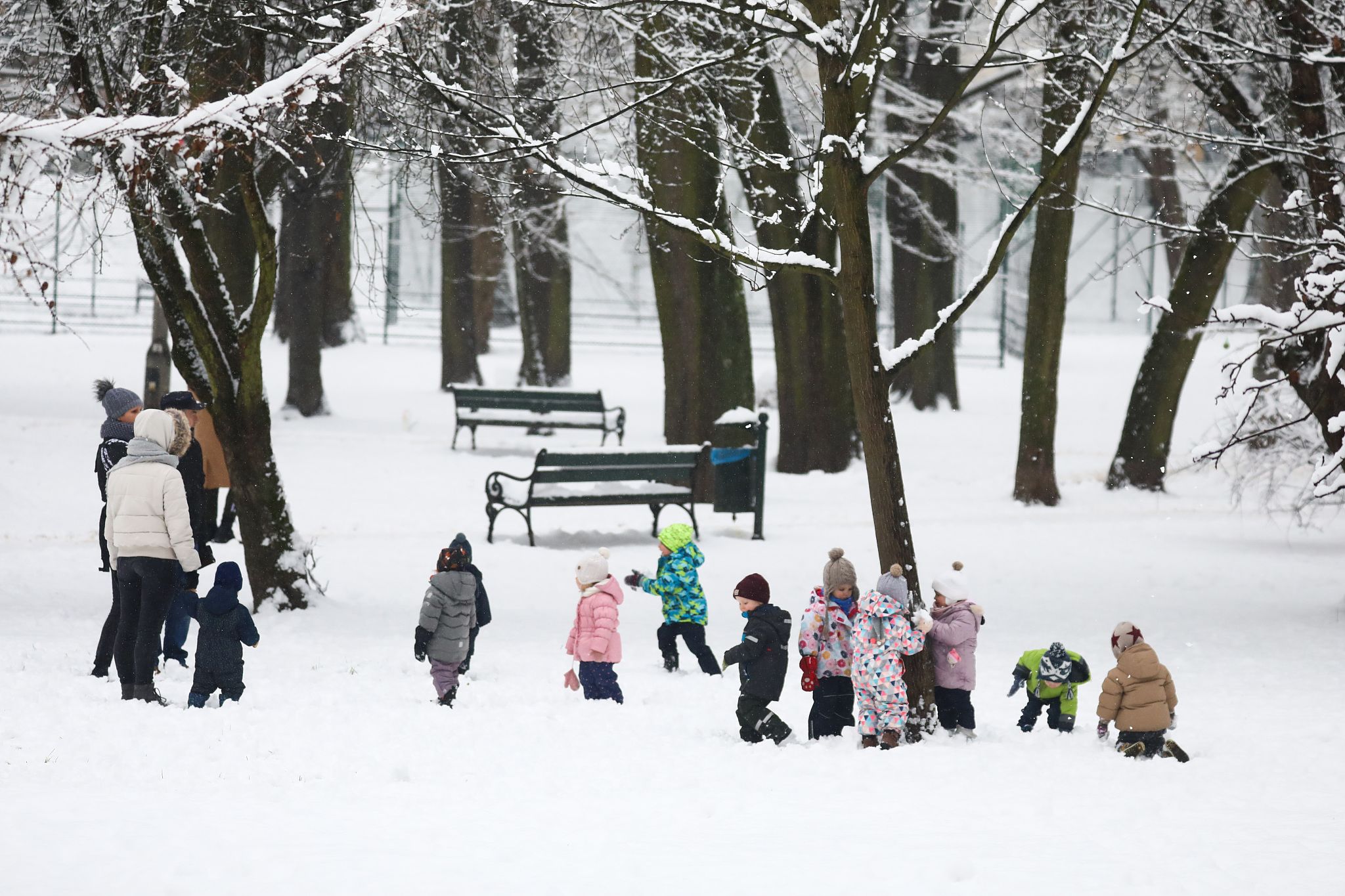POVERTY IN RICH PLACES
Wealthy countries also have poverty – sometimes to a terrible extent

"To say that there isn't any real poverty in the U.S. is not to look around the country."
Even in richer nations, poverty is also a blight on people's lives. The poverty line in wealthy countries is defined as those living on less than 60 percent of the median disposable income. Approximately 47 million children in the nations of the OECD live below their national poverty lines. So what have rich nations done to tackle poverty?
Wealth redistribution is a hot topic in most rich economies and many policies that aim to tackle inequality and redistribute wealth have been implemented over the last few decades. The arguments over how to most successfully redistribute wealth in society go to the heart of politics across the world.
Those usually on the political left tend to argue that the government should be responsible for wealth redistribution through policies like a minimum wage, income supplements and subsidized services like housing, education, healthcare and childcare. To pay for this, businesses and wealthy individuals would be taxed. The idea is that this is not just altruistic, but that it will boost the economy as the poor will immediately spend the money distributed to them because their needs are high, and this fiscal input will therefore benefit everyone.
However, there has long been an argument from the political right for 'small government' – insisting that interference in the market damages economic prosperity and disincentivizes profit which ultimately leads to lower economic activity and strangled economic growth. Advocates believe the best way to stimulate the economy is with free market policies and limited regulation so that wealth owners can invest in capital to create wealth and generate more jobs. They advocate policies such as lower taxes and limited regulation from government, which they believe will encourage business owners to produce goods more efficiently. If this means the rich are getting richer, it doesn't matter, because this wealth will be redistributed through the economy to those at the bottom and therefore eradicate poverty. This theory is known as the 'trickle-down' effect. There is plenty of data to back up both economic theories and all rich nations implement a combination of these policies.
In wealthy nations, one factor that has become increasingly apparent over time is the role of inequality in poverty. Gender, age, ethnicity, social grouping and disability significantly affect earning potential in every society. You will see these groups over-represented in poverty statistics as many struggle on the fringes of society. It is also apparent that it is very difficult to move from a position of poverty to becoming an owner of capital.
In countries with a large proportion of people earning middle and higher incomes, the poorer groups of society find themselves dealing with inflated prices for basics like housing, healthcare, energy and transport. Unlike extreme poverty, which tends to hit rural people and encourage migration to cities, in wealthy nations it's often the urban poor that struggle hardest to live.
The American Dream?
The U.S. has long been a strong advocate of the 'trickle-down' theory and has become the wealthiest nation on earth while following policies of low taxes on high earners and businesses. Despite the widely-held belief of 'The American Dream' in which anyone can get rich through hard work, the reality is that race inequalities have huge implications for wealth.
According to a 2019 McKinsey report analyzing median wealth, "the racial wealth gap between black and white families grew from about $100,000 in 1992 to $154,000 in 2016," as black families' median wealth "did not grow at all in real terms over that period." Statistics from the Federal Reserve in 2016 noted that median white household income was $171,000, Hispanic $20,700 and black $17,600.
U.S. poverty is far from colorblind. Working from the U.S. Census Bureau data in 2019, analysts 24/7 Wall Street revealed that the poverty rate among whites is 8.1 percent, among Asian Americans 10.1 percent, among Hispanic Americans 17.6 percent and among Black Americans 20.8 percent.
Even for those who manage to lift themselves upwards out of poverty, success is relative and can be fleeting. McKinsey notes that "the average black family with a household income of $100,000 lives in a neighborhood where the average income is $54,000," and that "almost 70 percent of middle-class black children are likely to fall out of the middle class as adults."
Many European countries have followed a form of redistribution model with mixed results. In recent decades, globalization has allowed multinational companies to choose a low tax base country, making collecting taxes on business profits much more difficult. Economic policies such as low interest rates, used to stimulate the economy through hard times, have led to asset inflation and intergenerational inequality with younger people now making up one of the largest groups of people living in poverty.
Simple dwelling made from discarded rubbish, Cañada Real, Spain. /CGTN Europe
Simple dwelling made from discarded rubbish, Cañada Real, Spain. /CGTN Europe
Robert, 55, has been homeless for 37 years, Hollywood, California 2021. /Valerie Macon/AFP
Robert, 55, has been homeless for 37 years, Hollywood, California 2021. /Valerie Macon/AFP
Why eradicating moderate poverty could accelerate climate change

Data World Bank (PovcalNet) 2017
Data World Bank (PovcalNet) 2017
Santa Claus visits the Favela da Maré, one of the largest Favelas in Rio de Janeiro. /Fabio Teixeira/Polaris
Santa Claus visits the Favela da Maré, one of the largest Favelas in Rio de Janeiro. /Fabio Teixeira/Polaris
Women from the Kayan tribe adapt with mobile phones, Kayah state, Myanmar. /Marc Dozier/Getty
Women from the Kayan tribe adapt with mobile phones, Kayah state, Myanmar. /Marc Dozier/Getty
"We need a view of acting together beyond just the appeal of a common shared problem. We need to invest in one another."
No country has eradicated poverty; all countries still have work to do. The UN goal to eradicate extreme poverty is vital, while each country's domestic policies to tackle extreme poverty are important for stability – but what of those living in moderate poverty? What makes these people worthy of our interest?
Firstly, their sheer number – while 10% of the world's population live in extreme poverty, 85 percent live in moderate poverty. And that scale can be hard to comprehend.
The chart above – a recreation of a data visualization by Max Roser, founder of Our World in Data – might help. It shows the average income in countries around the world. Each bar is a country; its height represents the average daily income there, its width represents the country's population size.
Firstly, this is a stark display of how low many people's incomes are, with 50 percent of the planet are still living on less than $10 a day. Most people still live on less per day than the poverty threshold of rich nations (around $25-$35). Low incomes usually translate to low standards of living, higher mortality rates – and a thirst for rapid economic growth.
This puts economic growth and the increase in average income at the forefront of many governments' minds – at a time when climate chaos is tolling the bell for classic economic theory. Around the world, drought, fires, floods, rising sea levels and hurricanes are not just costing billions of dollars in damages but forcing everyone to think differently about how economies work.
Put simply: If climate chaos is a direct consequence of carbon emissions, and carbon emissions are a direct consequence of consumption and economic growth, then raising much of the world out of poverty could vastly worsen climate chaos – if humankind continues on its current path.
It's a looming problem well known to Achim Steiner, administrator of the United Nations Development Program.
"We have an extractive economic paradigm that looks at nature as something that you basically draw down in order to build up an industrialized economy," Steiner tells CGTN Europe. "Now, in our age, that equation doesn't work, and that is why the world is bound together in responding to these multiple challenges."
Steiner accepts the way that we structure our economies must change if we are to tackle climate change. Africa is looking at contributing between one and two billion eager consumers by 2050.
"Imagine adding another billion people to the current grid as electricity consumers using fossil fuels," he says. "There is no way that we would succeed in achieving the kinds of targets that the Paris agreement set out."
So what does this mean for 50 percent of the world's population, most of whom have just escaped extreme poverty and are looking forward to the promises of an OECD nation lifestyle? The result could spell disaster for the planet. What can be done to convince these crucial people to change their behavior and alter their ideas of prosperity and progress? Will they listen when richer nations are doing so little to address carbon emissions themselves?
Steiner believes that these consumers can be persuaded to put tackling climate change first and continue to prosper without sacrificing their dreams – but they cannot do it alone.
"We need a view of acting together beyond just the appeal of a common shared problem," he says. "We need to invest in one another."
Steiner believes the world is being offered an opportunity to change the way economies are structured, but it can only work if these consumers are offered affordable alternatives to fossil fuels.
"If we can make the green recovery a driver for also providing renewable energy, off-grid energy sources, in many of those countries that still have more than half of their population without access to electricity, we could come out of this crisis with a cleaner energy matrix."
Steiner also believes that richer nations can benefit by leveling the playing field.
"The wealthy world not only has a vested interest in how the poorer world accelerates its own development, it's actually an investment opportunity and renewable energy infrastructure."
Poverty and the pandemic in Europe
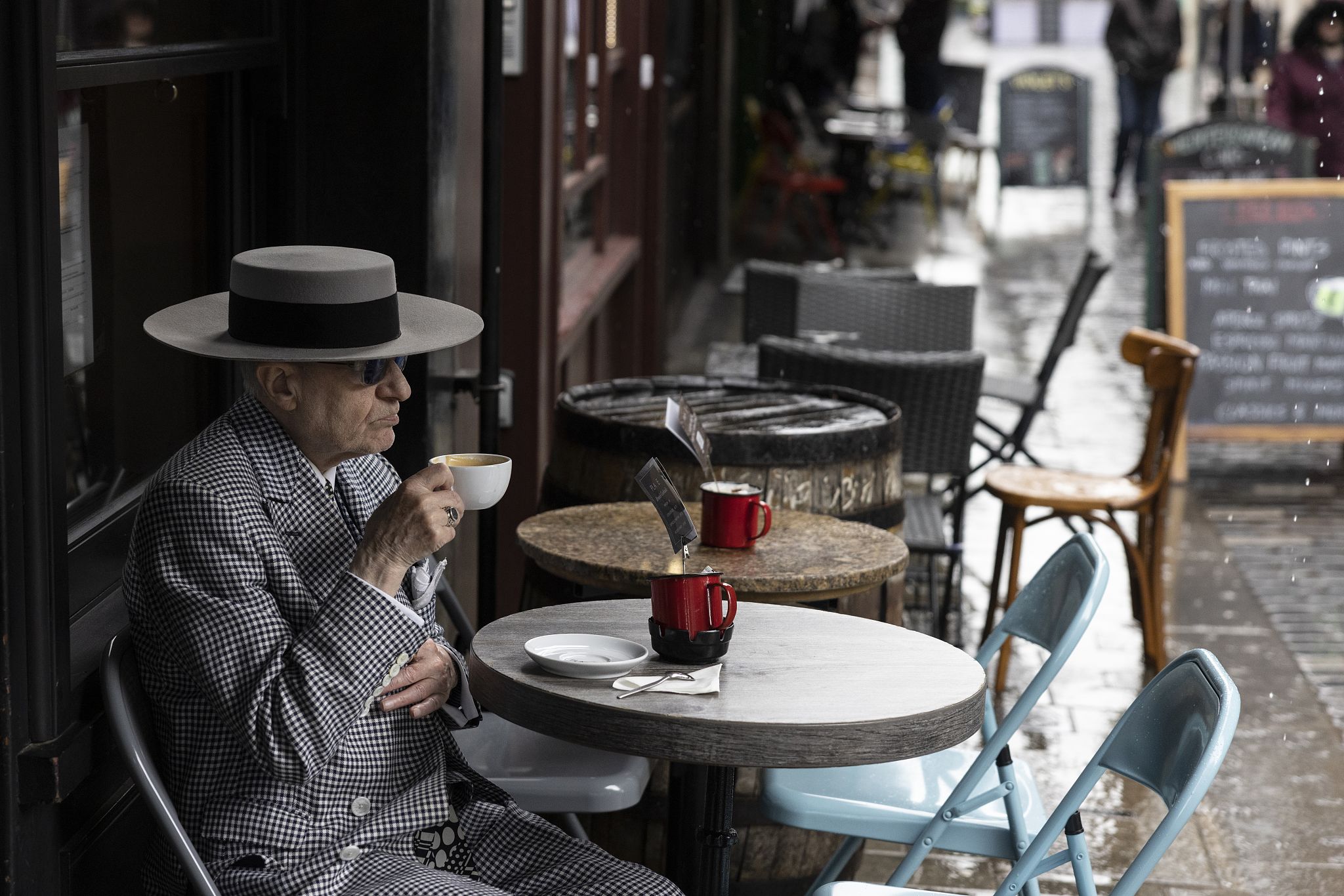
The COVID-19 pandemic has had a devastating impact on economies across the globe – and while it comes as no surprise that poorer countries have been hit hardest, it's easy to overlook the damage that it has caused to poor people in rich countries.
For example, while many around the world aspire to attain the level of countries in the European Union, all of the bloc's members have been devastated by business closures, job losses and unemployment. Obviously these problems have hit the EU's poorest people hardest – and that might be a bigger slice than you think.
Of the EU's 446 million population, 92.6 million – more than a fifth – were at risk of poverty even before the pandemic hit. That's because one in five people in the EU are living on less than 60 percent of their country's average income – considered the working definition of relative poverty.
Again, the problem is not consistent across the EU. Bulgaria has the highest percentage of people living below the breadline, with 32.5 percent, while Czechia has the lowest with 12.5 percent. Spain, Greece and Italy are among the seven nations with more than 25 percent – one in four – living in poverty.
And once more, the problem does not raise itself consistently across society. Some sectors are simply more likely to suffer than others. Women, young adults, people with poor health, people with low education and single parents with children are all among the highest-risk groups.
In terms of age groups, those between 18 and 24 years old are most likely to struggle, with 27.8 percent below the breadline, while over-65s are least likely, with 18.6 percent – still a worryingly high percentage.
Unsurprisingly, the greatest cause of poverty is unemployment, with 65 of the jobless living below the poverty threshold. After the pandemic hit in March 2020, unemployment rose dramatically across the EU, from 6.6 percent to 7.8 percent.
Furthermore, even as Europe strives to return to some sort of normality, unemployment has stayed high. By May 2021, 7.3 percent of the working population were still jobless; in Greece and Spain, nearly one in four can't get a job or need more hours to pay the bills.
And as the furlough and aid schemes quickly set up by various governments start to wind down, the pandemic's economic long tail could continue to whip those parts of society which are least equipped to deal with it.
People line up at a food bank in Madrid, Spain. /CGTN Europe
People line up at a food bank in Madrid, Spain. /CGTN Europe
Spain's struggle against poverty
By Rahul Pathak in Madrid
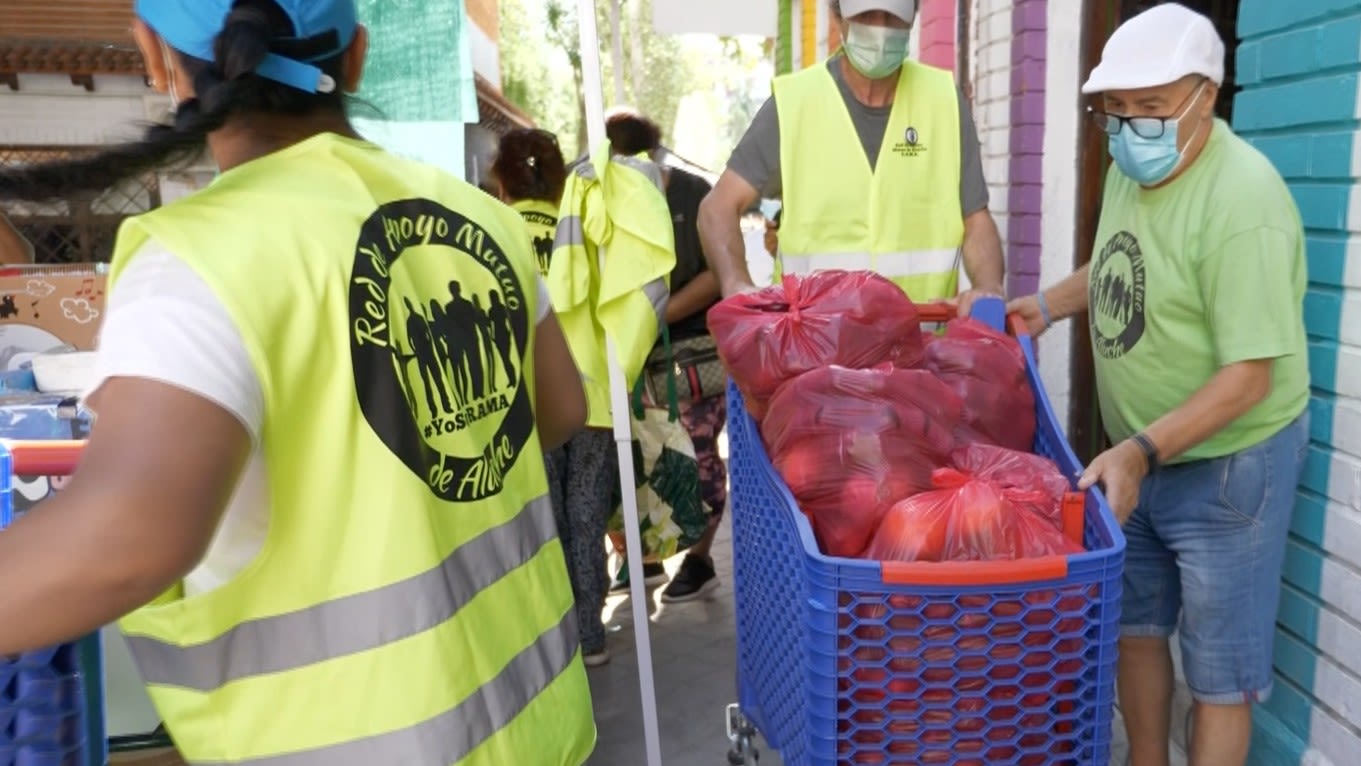
"Poverty is ultimately a political choice, and governments can, if they wish, opt to overcome it."
As the United Nations Special Rapporteur on extreme poverty and human rights, Philip Alston became accustomed to seeing suffering. In February 2020, following a fact-finding mission to Spain, Alston said he was shocked at the level and scale of poverty in certain parts of the country.
A recurring theme was that of certain communities being abandoned by the state.
Many of the public services that those communities relied upon, were slashed during the 2008 economic crisis. However, as the Spanish economy slowly recovered, many of those public services weren't restored.
By 2019, official figures showed more than one in four people in Spain were at risk of poverty or social exclusion, one of the highest rates in Europe... and then came the pandemic.
What was already a serious issue became even more critical thanks to the financial impact of coronavirus.
A study on living conditions published in July 2021 found 7 percent of Spaniards were suffering from severe poverty or material deprivation a year on from the outbreak of the pandemic. That's the highest figure seen since the worst days of the 2008 financial crisis.
With state assistance lacking, Spain's voluntary sector has played a vital role in helping those most in need.
Spain's worst slum?
Recently CGTN Europe joined the volunteers of the Fundacion Madrina charity on a visit to Cañada Real, one of Madrid's most notorious slums.
For months more than half of its 8,000 residents have been living without electricity for light or heating, a situation made even worse when Madrid suffered a cold snap back in January with temperatures dropping to -10 degrees Celsius.
"I have no resources right now, I'm looking for help everywhere."
The issues highlighted by Philip Alston back in February 2020 are still very much in evidence in Cañada Real, today according to the charity's president Conrado Giménez.
"I wish there were enough houses around Spain to relocate all the people that are surviving here," he told CGTN Europe. "They have gotten used to living in a ghetto and ghettos are only a source of violence and poverty, so we can't make that root deeper. We must promote employment and relocate these families into better areas, better areas for their kids to grow up."
Polarized politics prevent help
The polarized nature of Spanish politics has meant any attempt to improve the social assistance system has been bogged down by political infighting.
The current socialist government of Pedro Sanchez has tried to implement some reforms.
Its furlough scheme has paid out $48 billion to those made jobless during the pandemic and in June 2020, the government introduced a national minimum income scheme. The measure was designed to help the 2.3 million poorest in the country by ensuring a household income ranging from $512 to $1,125 a month, even if claimants were not working.
But with the administration overrun with claims, it has often taken months for the payouts to materialise.
It has forced many to rely on food banks or 'hunger queues' especially by workers in the sectors hit hardest by the pandemic like hospitality or construction.
In May 2020 CGTN Europe met 38-year-old Roberto Sotelo from Madrid in one such queue. A construction worker, he was laid off during lockdown and has struggled to provide for his family ever since.
"I have no resources right now, I'm looking for help everywhere, for people to help me," he told CGTN Europe. "If I don't get that support, I don't know how I'm going to make it to the end of the month, it's almost impossible."
The fact that these hunger queues are now such common sight in a country with Europe's fourth-largest economy should, in the words of Philip Alston, "force Spain to take a close look at itself in the mirror."
Residents in Cañada Real, Spain. /CGTN Europe
Residents in Canada Real, Spain. /CGTN Europe
Child playing in the street, Cañada Real, Spain 2021. /CGTN Europe
Child playing in the street, Canada Real, Spain 2021. CGTN Europe
Poland's poverty-beating reforms
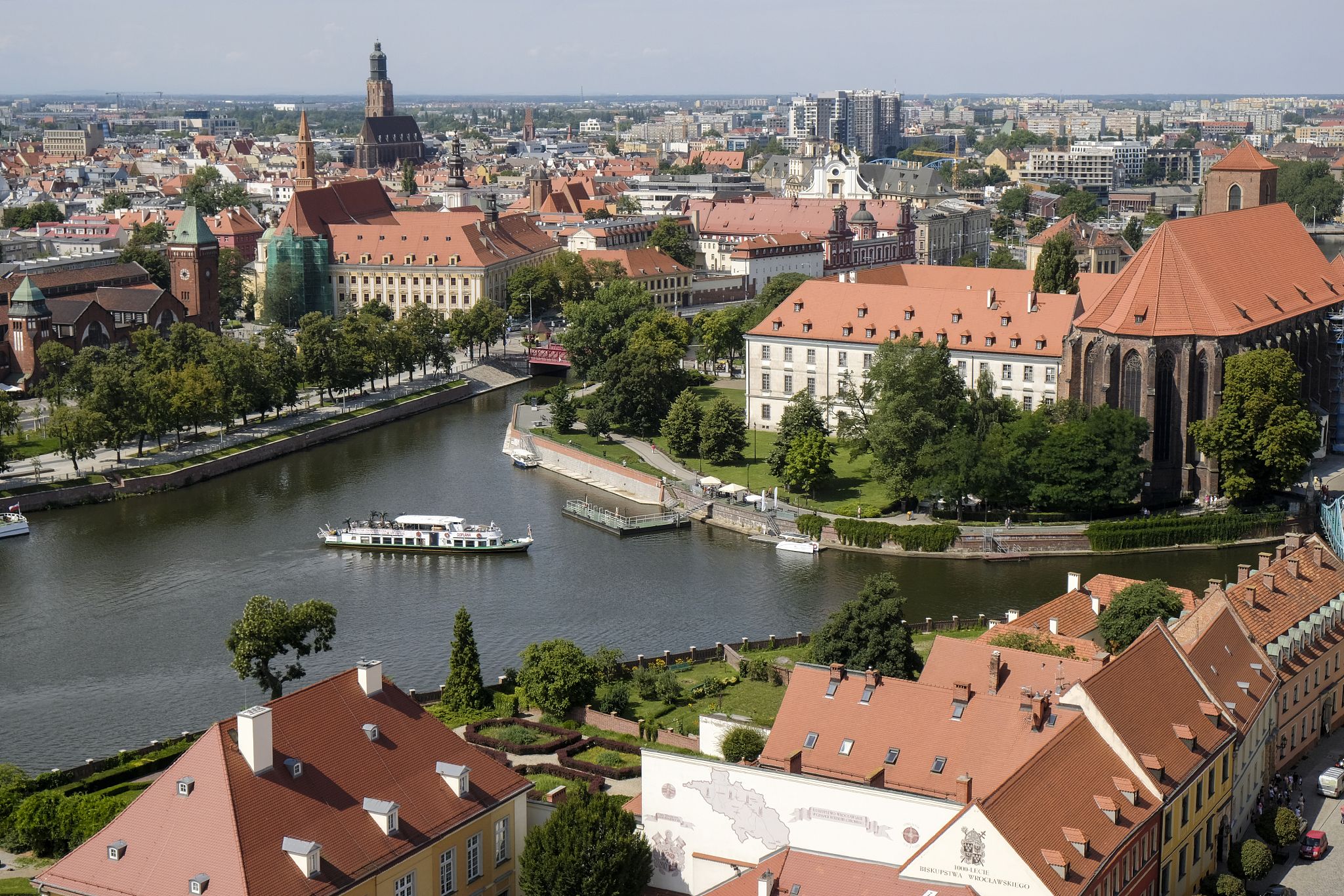
Uber Eats food delivery cyclist in Krakow, Poland during lockdown. /Beata Zawrzel/ Getty
Uber Eats food delivery cyclist in Krakow, Poland during lockdown. /Beata Zawrzel/ Getty
A family plays in a dinosaurs amusement park in Baltow, Poland on May 29, 2020. /Dominika Zarzycka/NurPhoto/Getty Images
A family plays in a dinosaurs amusement park in Baltow, Poland on May 29, 2020. /Dominika Zarzycka/NurPhoto/Getty Images
Small children play in in a park covered with snow in Krakow, Poland. /Beata Zawrzel/NurPhoto/Getty Images
Small children play in in a park covered with snow in Krakow, Poland. /Beata Zawrzel/NurPhoto/Getty Images
"The government simply prioritized business over personal freedoms – it was a business-friendly lockdown."
According to EU statistics, Poland is one of the countries with the fewest people categorized as poor. It has also been one of the best places to ride out the pandemic.
CGTN Europe asked Pawel Bukowski, a research fellow at The London School of Economics who has been studying the Polish economy closely in recent years, why this might be.
Bukowski sees two main reasons for Poland's pandemic success. The first is the structure of its lockdown policies.
"Poland was relatively quick to introduce a deep lockdown during the first wave," he says. Limiting excess deaths "allowed the economy to reopen with strong economic activity before the second wave."
However, larger numbers in the second wave resulted in a change of approach.
"The government simply prioritized business over personal freedoms," Bukowski explains. "People could go to saunas and shop but they couldn't send their kids to school – it was a business-friendly lockdown."
The second reason is Poland's economic structure – in particular, its large manufacturing sector.
"The industries which suffered the most are tourism, transportation and hospitality sectors," Bukowski explains. "Manufacturing has been less impacted by lockdown policies.
"If you look at the structure of employment, 27 percent of (Polish) people work in the sectors which were directly affected by lockdown. In comparison, in the UK this was 34 percent, and a similar share in Spain."
Poland also enjoys a relatively large economy with a significant domestic demand, making it less dependent on what is happening in for instance Germany or the UK. During the pandemic, manufacturing economies benefited as the world saw a shift from expenditure on services to spending on manufactured goods. And because Poland is a country with big growth in manufacturing, the Polish economy enjoyed the global shift towards consumption of products as opposed to services.
Bukowski points out another structural factor in Poland's favor: "I think the unions are not so strong in Poland, which certainly reduces the upward pressure on wages. And so we know from economic theory that this may result in a situation where you have relatively less unemployment but relatively lower wages."
However, there is evidence that poorer families in Poland were in a much better position to handle the pandemic due to a recent policy which the Polish people know as 500 Plus.
What is 500 Plus?
Introduced in 2017, the policy was initially intended to promote larger families and counter the falling birthrate. Parents receive monthly payments of around 500 Zloty ($180) for each child, and the payment lasts until the child turns 18. If you have more than one child, this can make up a significant portion of a family's monthly income. The benefit is paid whether you are in work or not.
Bukowski has seen great benefits for poor families, citing "evidence that it has dramatically reduced poverty among children in Poland."
The figures suggest a reduction in child poverty of as much as 50 percent. "Before 2016, 9 to 10 percent of children lived in poverty," says Bukowski. "After the program in 2017, we see this number to be around 4.5 percent. I think 500 Plus probably was the major reason why we observe this decline."
The payments are also made in cash, so is it more useful to let parents decide how they should use the money? Bukowski thinks this is one of the most successful things about the policy.
"Let's say the program has the goal to improve the wellbeing of children. The question is, 'Who knows better what is better for the children – parents or the state?' The state may think the best idea would be simply to give them vouchers for books. But maybe kids don't need books, maybe they need to have a car which will drive them to school, or they need to have a school trip, or have a proper meal. It's super-hard to find one policy which would fit all the needs."
There are also other benefits to giving people cash.
"We are also helping the local economy because these people will take this money and spend it locally," says Bukowski, enunciating a variation on the theme of 'trickle-down' economics.
"And finally, I think just giving simple cash is more transparent and there's less space for corruption."
Corruption is often the biggest problem when trying to implement redistribution policies across the world. The provision of services or subsidies by the government is often open to market distortion due to a lack of competition.
"If you introduce a program which says you can only spend it on this, the producer of those goods comes with monopoly power; then you observe market distortion, increasing prices which would effectively erode the economic value of those benefits."
Is this Universal Basic Income?
A significant benefit with no income criteria is similar to Universal Basic Income (UBI) – a policy which gives all citizens a basic, equal amount of money regardless of income level. The pandemic has seen a possible precursor to this, with furlough schemes to see people through the pandemic.
Bukowski is sceptical that 500 Plus can be put in this category for a simple reason: "not all people received this transfer. Also, the amount is still a relatively small amount spent on this policy – a few percent of GDP. In the case of UBI, we are speaking about 25 percent of GDP.
"This has important implications because you can introduce 500 Plus without cutting other social spending in the country. If you want to introduce UBI, you must probably sacrifice other spending, so you must replace one program with the other program. And that's why I think in terms of social impact these are completely different ideas."
So is Poland a good place to be poor? Not exactly. Bukowski points out that Poland scores well on poverty statistics because of the way the EU analyzes the data.
"At the moment the EU counts poverty as the number of people with income below 60 percent of the country's median," he explains.
"Inequalities in a country between the very poor and mediocre people are not so pronounced – we almost mechanically create a situation where there's almost no poverty because there's not much difference between a poor person and the person who is in the middle.
"If we look at inequalities in Poland, it's mostly about the rich versus all other people... we may have a lot of inequalities in Poland, but at the same time a relatively low level of poverty."
